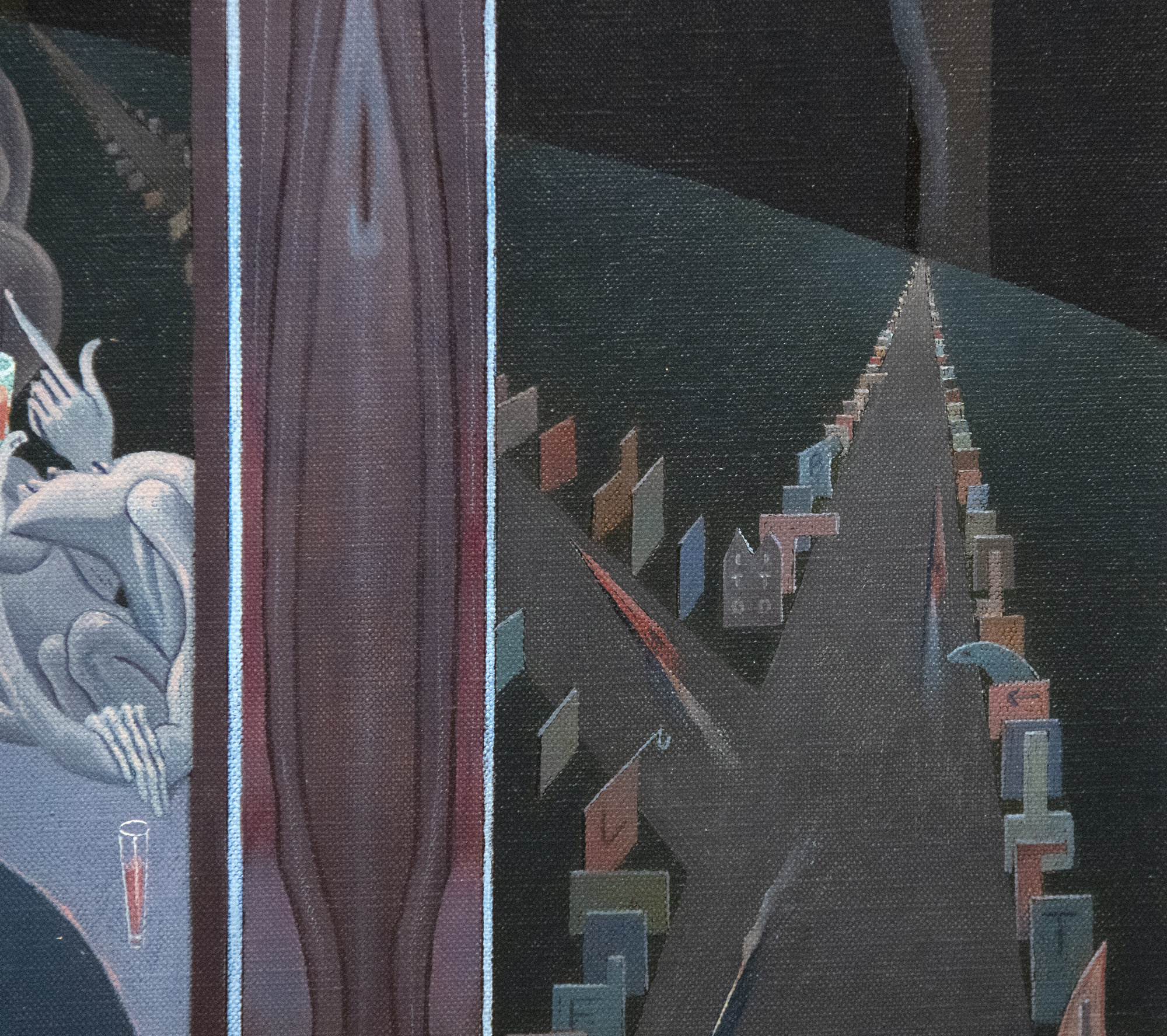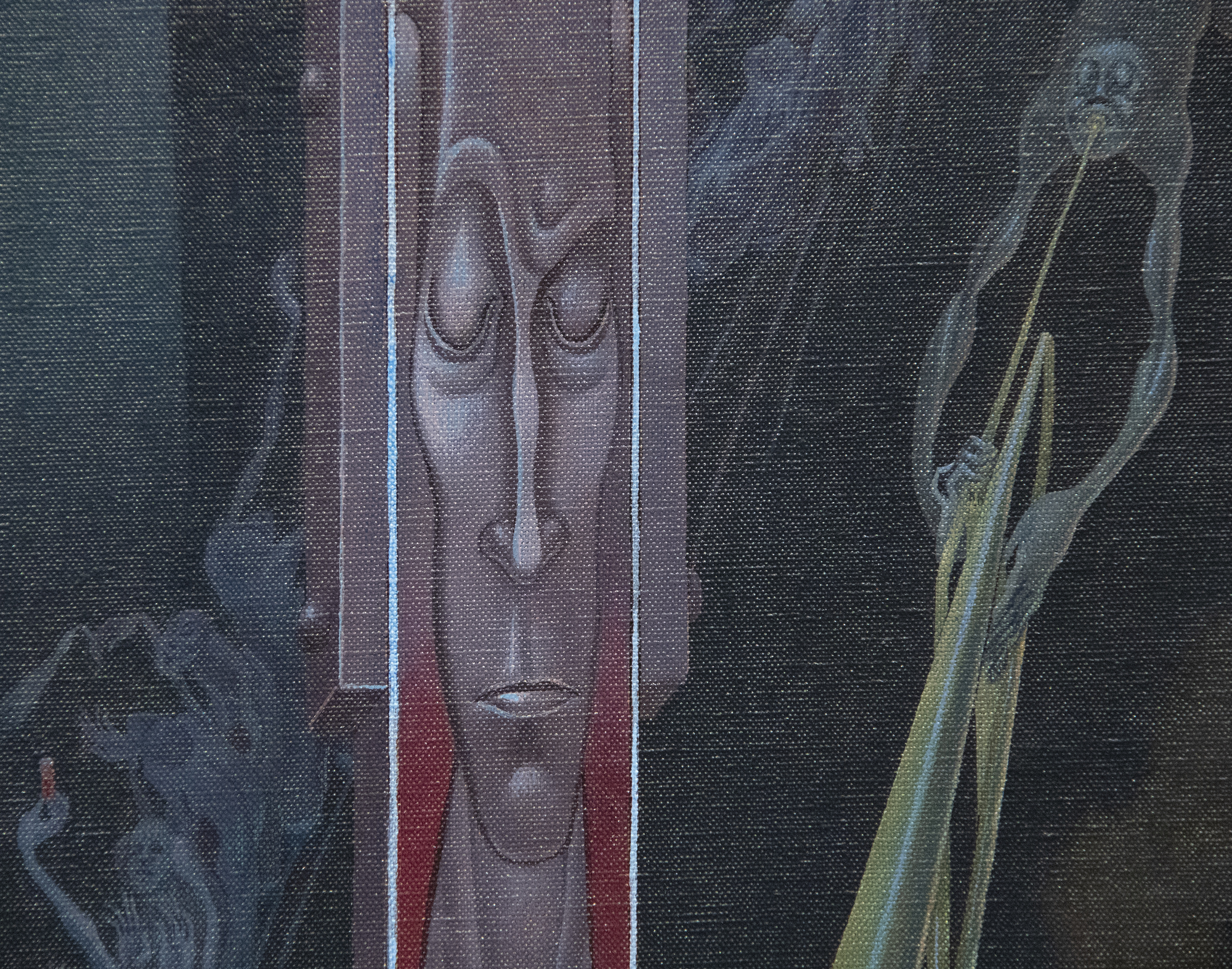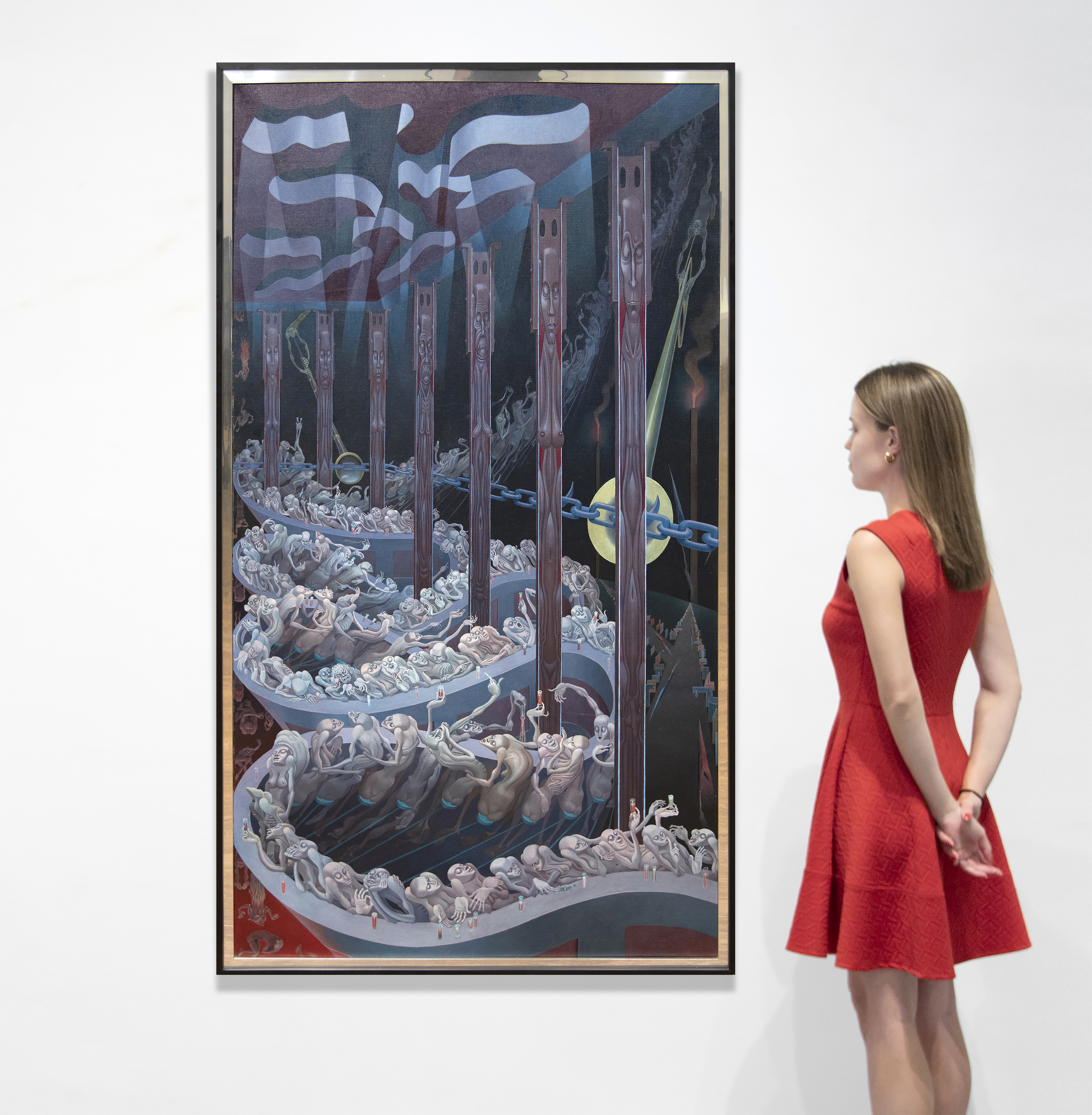IRVING NORMAN (1906-1989)










Provenance
Moses and Ruth Helen LaskyPrivate Collection, California
Exhibition
Dark Metropolis: Irving Norman’s Social Surrealism, Crocker Art Museum, Sacramento, California, September 23, 2006 - January 7, 2007; Pasadena Museum of California Art, January 26 - May 13, 2007; Nora Eccles Harrison Museum, Logan, Utah, June 5 - October 13, 2007125,000
Norman's work portrays the horrors of war and his firsthand knowledge of totalitarian dictatorships. Norman's work has been described as "Social Surrealism," and his grand scenes are immediate and arresting. The large-scale works of Norman truly capture the power of his lived experiences; they are as much a visual record as they are a warning for the future, intended to inspire change.


